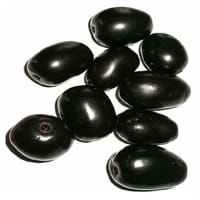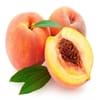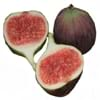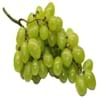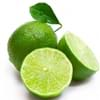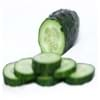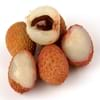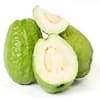Health Benefits
Cancer prevention, Heart care, Improves eye vision, Reduces stress, Regulation of heart rate
Cancer prevention, Heart care, Increase in haemoglobin, Regulates Blood Sugar, Ulcer prevention
General Benefits
Anti oxidant properties, Eye care
Boosts immune system, Digestive aid, Fights against infections, Strengthens bones
Skin Benefits
Heals sunburn, Reduces wrinkles, Treatment of skin diseases
Brightens and lightens complexion, Skin cleansing, Skin rejuvenation, Treatment of acne, Treatment of dark spots
Hair Benefits
Prevents hair loss
Promotes longer and healthier hair, Protects hair
Allergy Symptoms
Abdominal pains, Anaphylaxis, Breathing difficulty, Diarrhea, Dizziness, Hives, Itching, Lightheadedness, Nasal congestion, Nausea, Swelling of mouth, tongue or lips, Tingling sensation in mouth, Vomiting, Wheezing
Abdominal pains, NA
Side Effects
Allergic reaction
Decrease in blood sugar levels, Allergic reaction, Throat irritation, Throat swelling, Possibly unsafe during pregnancy
Best Time to Eat
As a snack in the late afternoon, Eat the fresh ones, avoid mixing with any other foods, don't eat after meal., Morning time (before lunch)
As a snack in the late afternoon, Don't consume at night and before bed, Eat the fresh ones, avoid mixing with any other foods, don't eat after meal., Morning time (before lunch), Strictly avoid empty stomach
Vitamin B5 (Pantothenic Acid)
Not Available
Vitamin B9 (Folic acid)
Not Available
Vitamin C (Ascorbic Acid)
Vitamin E (Tocopherole)
Not Available
Vitamin K (Phyllochinone)
Not Available
Lutein+Zeaxanthin
Not Available
Calories in Fresh Fruit with Peel
Calories in Fresh Fruit without Peel
Not Available
Not Available
Calories in Frozen Form
Not Available
Calories in Dried Form
Not Available
Calories in Canned Form
Not Available
Type
Tree fruit
Tree fruit, Tropical
Season
Autumn, Summer
Monsoon, Summer
Varieties
Reliance, Sweet Scarlet, Spring Snow, Sugar May, Santa Rosa, Red Beauty, Glowhaven, Cresthaven and Redhaven Peaches
Ram Jarnun and Paras
Color
Pink, Red, White, Yellow, Yellowish-orange
Black, Magenta, Purple
Inside Color
Yellow
Purple
Taste
Sweet
Astringent, Sweet
Origin
China
Bangladesh, India, Indonesia, Malaysia, Nepal, Pakistan, Philippines, Sri Lanka
Soil Type
Sandy loam, Well-drained
Loam, Sandy loam, Well-drained
Climatic Conditions
Cold, Warm
Humid, Rainfall
Facts about
- In china, peaches are considered as a symbol of good luck.
- From 1982, august is National peach month in USA.
- In roman times, Peaches were also called as Persian apples, as people assumed that they originated from Persia.
- Wood of jambul tree is water-resistant wood & is used in railroads and to implement engines in the well.
- In Indian mythology, it is said that Jambul fruit was revered by Buddha.
- Jambul has a huge importance in Ayurveda.
Other Countries
Greece, Italy, Spain, United States of America
Bangladesh, Indonesia, Malaysia, Nepal, Pakistan, Philippines, Sri Lanka
Top Importer
Germany
Not Available
Botanical Name
Prunus persica
Syzygium cumini
Synonym
Not Available
Eugenia cumini
Subkingdom
Tracheobionta
Tracheobionta
Division
Magnoliophyta
Magnoliophyta
Class
Magnoliopsida
Magnoliopsida
Family
Rosaceae
Myrtaceae
Species
P. persica
S. cumini
Generic Group
Rose
Not Available
Difference Between Peach and Jambul
We might think that Peach and Jambul are similar with respect to nutritional value and health benefits. But the nutrient content of both fruits is different. Peach and Jambul Facts such as their taste, shape, color, and size are also distinct. The difference between Peach and Jambul is explained here.
The amount of calories in 100 gm of fresh Peach and Jambul with peel is 39.00 kcal and 60.00 kcal and the amount of calories without peel is Not Available and Not Available respectively. Thus, Peach and Jambul belong to Low Calorie Fruits and Low Calorie Fruits category.These fruits might or might not differ with respect to their scientific classification. The order of Peach and Jambul is Rosales and Myrtales respectively. Peach belongs to Rosaceae family and Jambul belongs to Myrtaceae family. Peach belongs to Prunus genus of P. persica species and Jambul belongs to Syzygium genus of S. cumini species. Beings plants, both fruits belong to Plantae Kingdom.

